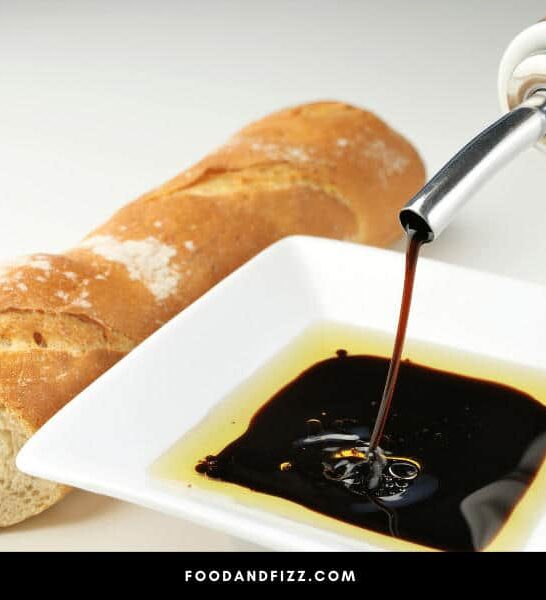There’s nothing like a good sandwich with a splash of vinegar. It has a surprising effect on a sandwich. It gives it a zing and moistens each bite. It also helps cut through the fat.
What Kind of Vinegar is Put on Sandwiches?
The most common type of vinegar used on sandwiches is red wine vinegar. However, there are many vinegars that are suitable for sandwiches, depending on your preferences and the type of sandwich.
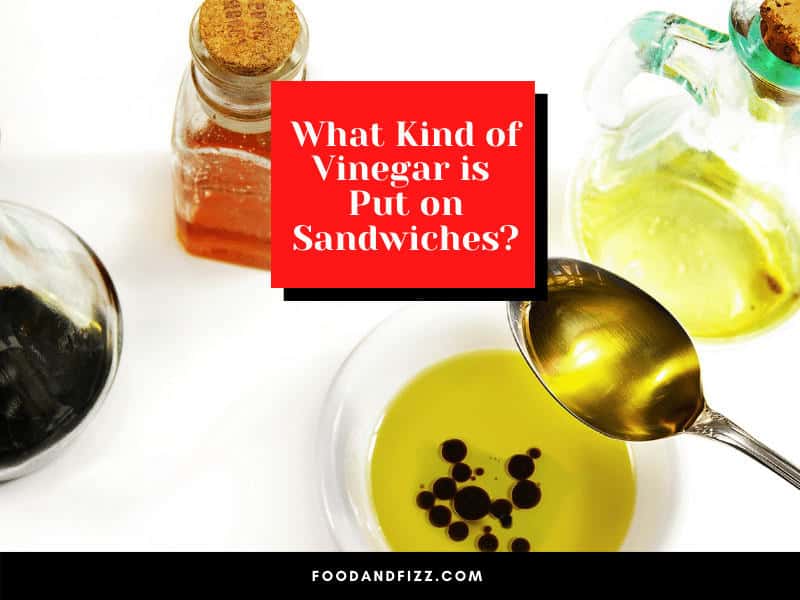
Types of Vinegar for Sandwiches
There are many types of vinegar for sandwiches. These include red and white wine, balsamic, apple cider, tarragon, basil, sherry, champagne, and rice vinegar. A vinegar and oil blend can also be used.
Red and White Wine Vinegar
Red wine vinegar has a tangy flavor. It can also have a mild fruit flavor. It is stronger than balsamic vinegar, but not as strong as white vinegar. White vinegar is similar, but a bit lighter in flavor than red wine vinegar.
As the name suggests, red wine vinegar is made by fermenting red wine with a starter culture. White wine vinegar uses the same process with white wine.
This process causes the sugar present in red wine to turn into acetic acid, which is what makes vinegar, well, vinegar.
Subway and Jersey Mikes offer a sandwich dressing made with red wine vinegar and oil. This gives the sauces their signature tangy flavor.
Balsamic Vinegar
Balsamic vinegar is similar to red wine vinegar, as both are ultimately made from grapes. However, balsamic vinegar is made from the grape must, which is all parts of the grape. This includes the juice, flesh, seeds, and even the stems.
Traditional balsamic vinegar is very dark, and has a mild tangy flavor. It is traditionally aged in barrels, and can develop a light smoky flavor as well. In addition to sour notes, it also has sweetness.
It’s also very expensive, and isn’t used for cooking or salad dressings.
The balsamic vinegar that you’ll find on typical store shelves is known as Moderna IGP. This type is mixed with wine vinegar. The balsamic can range from a small amount up to 50%.
Thicker or darker balsamic vinegars have a higher percentage of grape must than lighter and thinner varieties.
Generally, the more expensive balsamic vinegars have a more complex flavor, and darker vinegars will have a sweeter flavor.
This type of balsamic is perfect for salad dressings and sandwiches.
To make things even more complicated, there are also balsamic flavored vinegars. These may be made with white or apple cider vinegar. Coloring and flavors are added to make them similar to a real balsamic vinegar. These are also suitable for salads and sandwiches.
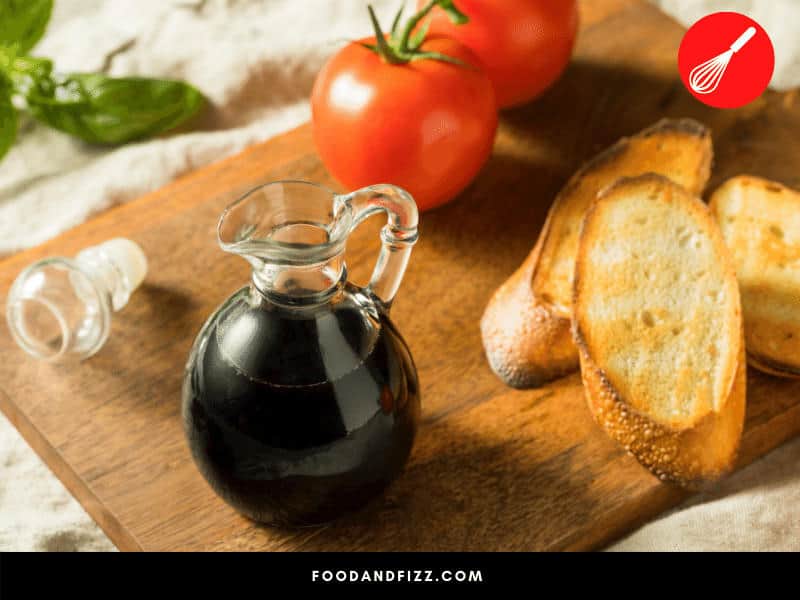
Apple Cider Vinegar
The other well known vinegar for sandwiches is apple cider vinegar. It is not as sour as white vinegar. It has a light fruit flavor, and can have a touch of sweetness.
Apple cider vinegar is made from apples. They are chopped into pieces and covered with water. Over time, the natural sugars in the apples will turn to alcohol. Bacteria is added to ferment the alcohol, which forms acetic acid.
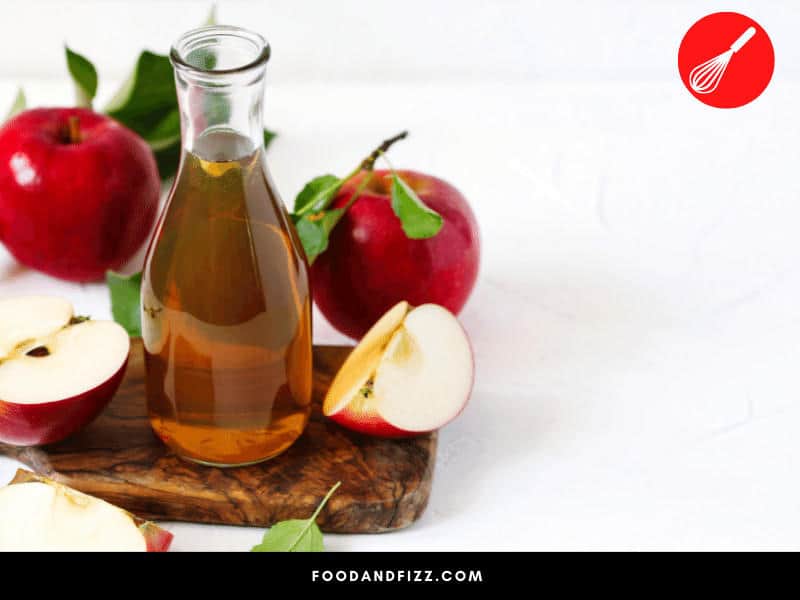
White Vinegar
White vinegar can be used for sandwiches, but it’s not recommended. White vinegar has a strong vinegar flavor, and no other flavors to balance it.
If you have a craving for a strong vinegar taste, you can use white vinegar, but it’s a bit overpowering to most palates.
Other Types of Vinegar For Sandwiches
There are many lesser known types of vinegar, and some of these work well for sandwiches.
Herbal Vinegars
Herbal vinegars include tarragon and basil vinegar. These are made by infusing white wine vinegar or white vinegar with the herb. The mixture is allowed to sit for up to six months, which allows the herbs to infuse the vinegar with its flavor.
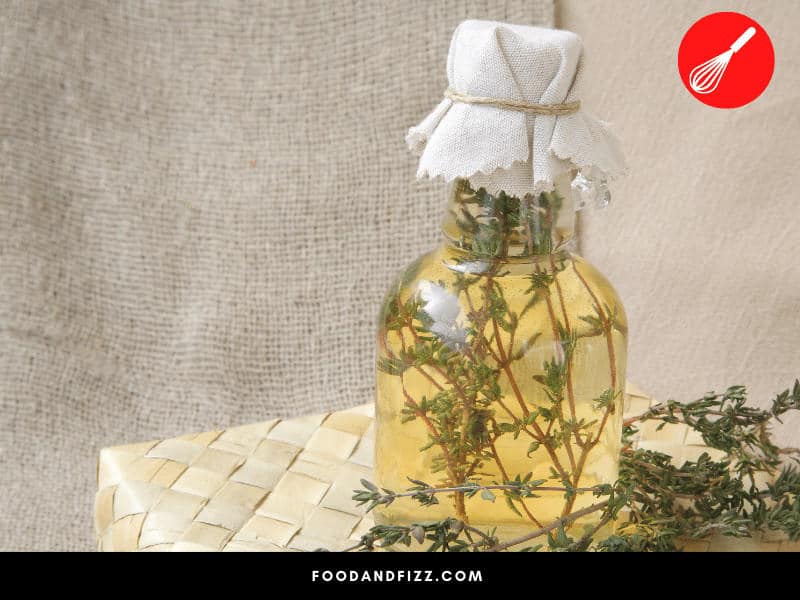
Alcohol Derived Vinegars
Sherry vinegar is made from sherry. It has a crisp acidity paired with nutty and caramel flavors. It works well for heavy meats, including roast beef and meatball subs.
Champagne vinegar is made from two types of alcohol, chardonay and pinot noir. It has a mild flavor and floral notes. It would go well with a light sandwich, including chicken or seafood.
Rice Vinegar
Rice vinegar is made by fermenting rice. Even though sweetness may not be the first thing that comes to mind when you think of rice, it contains a significant amount of sugar.
The sugars in the rice are fermented, creating rice wine. Bacteria is added, and fermentation occurs again, creating rice vinegar.
Rice vinegar has a delicate sweet flavor. It’s traditionally made in Asia. Consider it for Asian inspired sandwiches like chicken teriyaki. It’s light flavor also pairs well with wraps.
Vinegar and Oil
Vinegar and oil is a favorite for sandwiches. It’s milder than plain vinegar, and gives your sandwich a more complex flavor.
Olive oil is the most common oil used to create a vinegar and oil blend. Canola oil, or a blend of canola and olive oil, can also be used.
Red wine vinegar is the traditional vinegar used for the blend. However, balsamic vinegar also works well.
It’s easiest to mix the two ingredients in a jar. Simply close the jar and shake vigorously to mix. When you want to use it again, be sure to shake it before using. The two ingredients will separate over time.
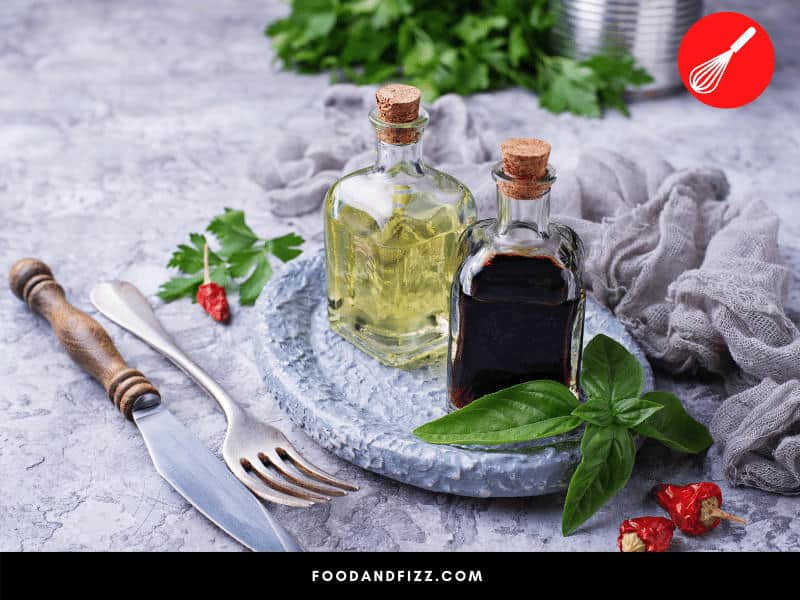
Wrapping Up Vinegar on Sandwiches
As you can see, many types of vinegar can be used for sandwiches. The most popular choice is red wine vinegar, with balsamic vinegar also being a great choice.
Vinegar and oil blends are also common, and are typically made with red wine or balsamic vinegar and oil.
White vinegar can technically be used on sandwiches, but due to its strong acidity and lack of other flavors, it’s not recommended.
Frequently Asked Questions to What Kind of Vinegar Is Put on Sandwiches
What Type of Vinegar Does Jimmy Johns Use?
Jimmy Johns uses red wine vinegar and olive oil for its vinegar and oil blend.
What Vinegar Goes on Italian Sandwiches?
The most common choice for Italian sandwiches and subs is red wine vinegar. However, balsamic vinegar also pairs well with Italian sandwiches.
How Long Does Vinegar and Oil Keep?
Vinegar and oil will last for at least one month. Many sources claim it can last much longer, even years in some cases. It simply needs a sealed container and an area away from heat and light.

